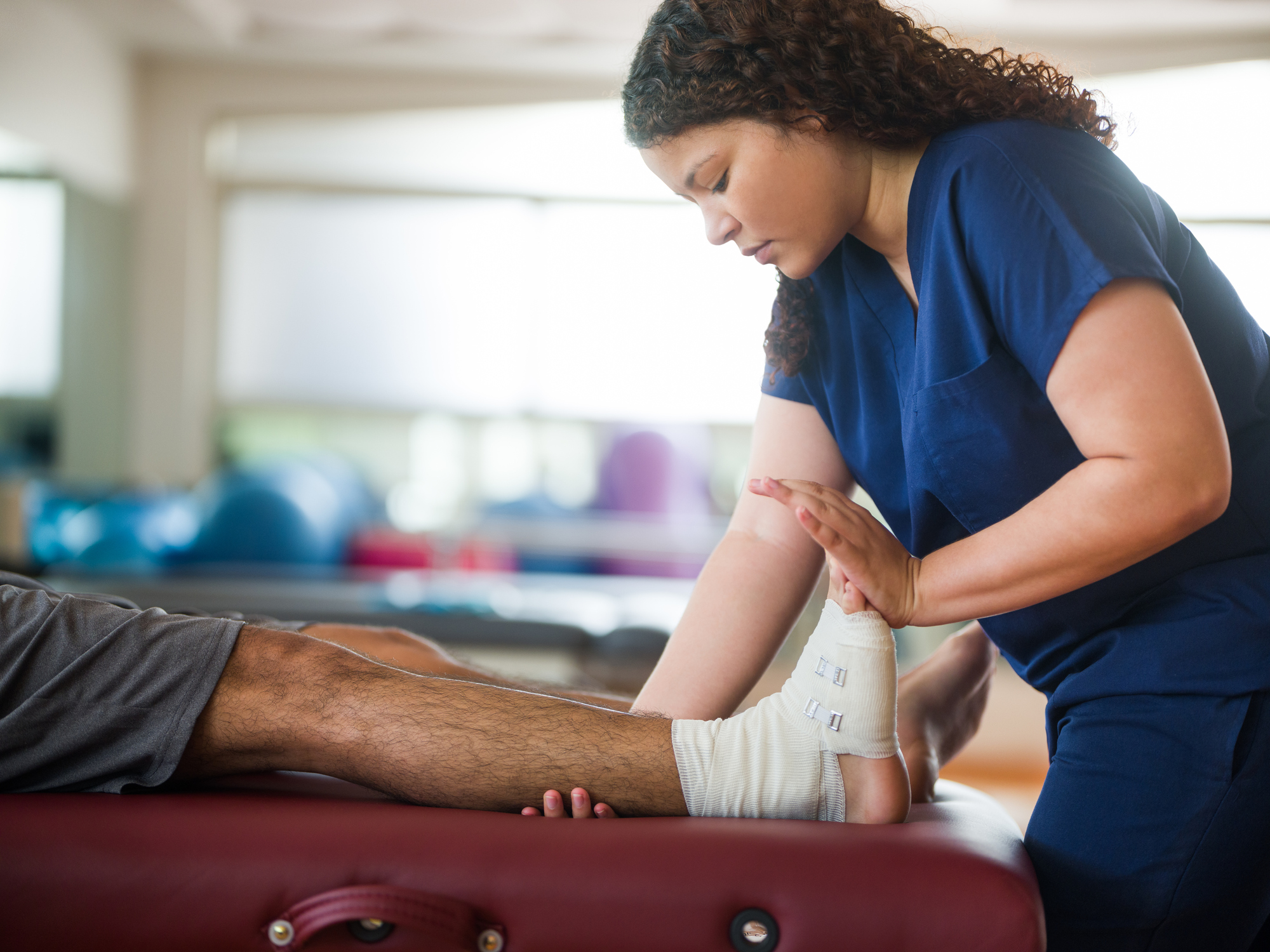Written by Hannah Faller (Physiotherapist)
Ankle sprains are one of the most common lower limb injuries sustained in the general population, with up to 70% reporting an ankle injury in their lifetime (Delahunt et al., 2019).
Typically, they occur when the foot rolls suddenly inwards.
This stresses the ligaments on the outside of the ankle, most commonly the anterior talofibular ligament (ATFL) and calcaneofibular ligament (CFL), which increases laxity in the joint.
After initially spraining your ankle, you will typically experience swelling, bruising and pain with weightbearing.
While these symptoms usually settle within 1-2 weeks, recovery from an ankle sprain does not end there.
A history of lateral ankle sprain has been described as one of the strongest risk factors for a future lateral ankle sprain (Herzog et al., 2019).
Therefore, proper physiotherapy assessment and rehab is essential following a sprain to reduce the risk of recurrent injury.
What will we look for in your physiotherapy assessment?
Pain and Swelling – Getting a baseline measurement of these helps us to keep track of ankle healing, inflammation and response to treatment.
Clear fractures/bony involvement – This is something we always need to clear before commencing rehab.
Ligament testing – We will test the ligaments around the ankle for pain and laxity to determine which ones have been injured.
Range of motion – Typically, ankle range will be restricted following a sprain. Assessing this will guide exercise prescription and help us keep track of response to treatment.
Strength – We will look at the strength of muscles around your ankle such as the calf and ankle evertors which helps to guide exercise prescription.
Balance – Due to the supportive role of ligaments in the ankle, balance is typically affected following a sprain. Getting a baseline balance measure will help us track your progress with the rehab.
What sort of exercises would we recommend for your ankle rehab?
Range of motion
Passive movement with towel – Sit with legs straight and towel around the bottom of your foot. Keep the ankle relaxed and use towel to pull ankle into restricted directions.
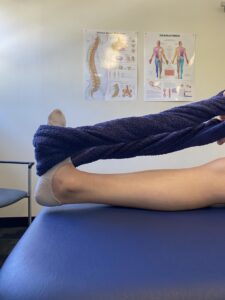
Knee to wall stretch – Keep knee against wall and shift heel as far away from wall as possible.
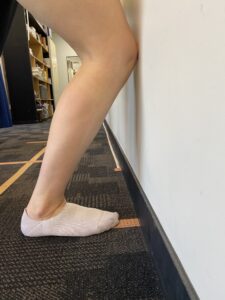
Strength
Calf raises – Stand with legs straight and lift heels off ground. Start with doing this on both legs and progress to single leg.
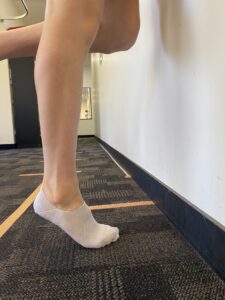
Eversion with resistance band – Sit on chair with feet on floor and band around both feet. Keep heels on ground and lift toes up and out against the resistance of the band.
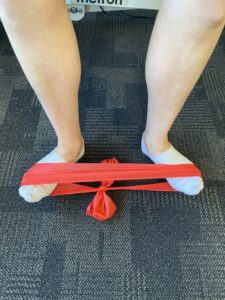
Balance
Single leg balance – Stand on one leg for as long as you can. To make this more challenging try with eyes closed or on a softer surface.
Single leg Y-balance – Stand on one leg and reach the other foot forward, then back towards the left and right to follow at ‘Y’ pattern.
Plyometrics (later stage)
Supported hopping with back foot elevated – Stand with back foot resting on a box and hop on the spot with the forward leg.
Hopping over line – Set up a line on the floor with tape and hop over it forwards and side to side.
Having a thorough assessment of your injury and progressing through a rehabilitation program under the guide of your physiotherapist will be crucial to strengthening the ankle, restoring range and improving balance following a sprain. These factors are all important in having a safe return to activity and reducing the risk of future ankle sprains.
References:
- Delahunt, E., Bleakley, C. M., Bossard, D. S., Caulfield, B. M., Docherty, C. L., Doherty, C., Fourchet, F.,Fong, D. T., Hertel, J., Hiller, C. E., Kaminski, T. W., McKeon, P. O., Refshauge, K. M., Remus, A., Verhagen, E., Vicenzino, B. T., Wikstrom, E. A., & Gribble, P. A. (2018). Clinical assessment of acute lateral ankle sprain injuries (roast): 2019 consensus statement and recommendations of the International Ankle Consortium. British Journal of Sports Medicine, 52(20), 1304–1310. https://doi.org/10.1136/bjsports-2017-098885
- Herzog, M. M., Kerr, Z. Y., Marshall, S. W., & Wikstrom, E. A. (2019). Epidemiology of ankle sprains and chronic ankle instability. Journal of Athletic Training, 54(6), 603–610. https://doi.org/10.4085/1062-6050-447-17

